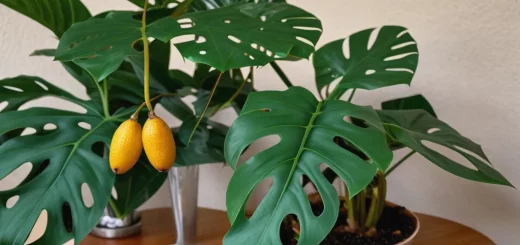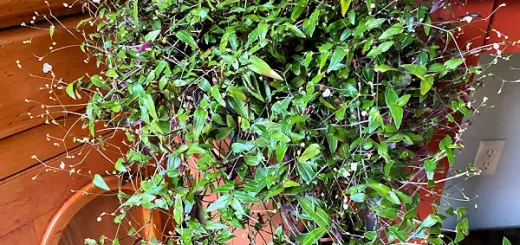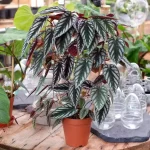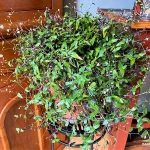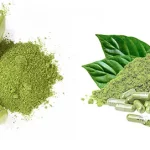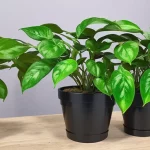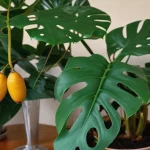the Best Black Indoor Plants
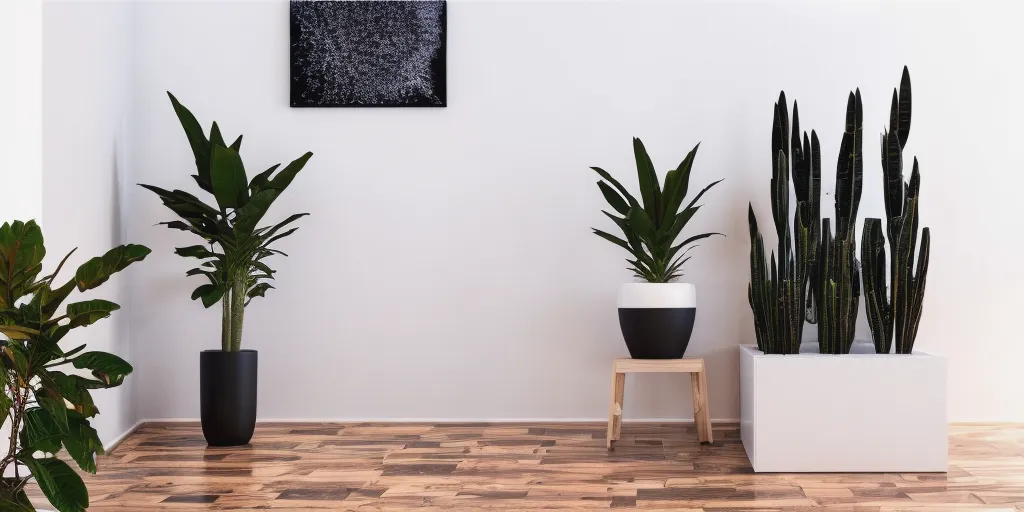
Table of Contents
Introduction to Black Indoor Plants:
In the realm of indoor plants, there’s a captivating category that stands out from the verdant greens typically associated with foliage: black indoor plants. These enigmatic plants, with their dark and often sultry appearance, bring a unique aesthetic that’s both mysterious and sophisticated. Their allure lies not just in their unconventional color but also in the depth and drama they introduce to any space.
However, as we delve deeper into the world of black plants, a question arises: Are these plants truly black? The answer often reveals a fascinating interplay of deep shades. Many “black” plants are, in reality, a rich tapestry of deep purples, greens, or reds, so dark that they appear almost black, especially under certain lighting. This nuanced coloration adds to their charm, making them a topic of intrigue and conversation.
1. The Appeal of Black Plants in Interior Design:
Black, often associated with elegance, sophistication, and mystery, has always held a significant place in the world of design. In interior spaces, black elements can evoke a range of emotions, from introspection to boldness. When this powerful color manifests in the form of plants, it introduces a dynamic element that’s both organic and dramatic.
1.1. Symbolism and Emotion Evoked by Darker Hues:
Black and dark hues have been symbols of depth, power, and luxury for centuries. In various cultures, they represent strength, authority, and elegance. When incorporated into interior spaces through plants, these colors can evoke feelings of introspection, calm, and contemplation. A room adorned with black plants can feel cozier, more intimate, and grounded. The deep hues draw one’s attention, creating moments of reflection and admiration.
1.2. Contrast and Drama: How Black Plants Enhance Modern Decor:
Modern decor, with its clean lines and often neutral palettes, finds a perfect companion in black plants. These plants introduce an element of surprise and contrast. Against a backdrop of whites, grays, or beiges, a black plant becomes a striking focal point, drawing the eye and adding depth to the space. Moreover, when paired with metallic accents like gold or copper, black plants exude luxury and opulence. They break the monotony, add layers to the design, and create a visual drama that’s both subtle and impactful.
2. Popular Black Indoor Plants and Their Features:
While the world of indoor plants is vast and varied, a select few have captured the imagination of plant enthusiasts and interior designers alike with their dark and dramatic hues. These black or near-black plants, each with its unique characteristics and care requirements, offer a refreshing departure from the usual green foliage. Let’s explore some of the most sought-after black indoor plants:
2.1. Black ZZ Plant (Zamioculcas zamiifolia ‘Raven’): The Dark Evolution of a Classic:
The ZZ plant has long been a favorite for its resilience and adaptability. The ‘Raven’ variety takes this classic and gives it a dark twist. Its glossy, dark leaves, which start as bright green and mature to a rich, near-black hue, make it a standout in any interior setting. Apart from its striking appearance, the Black ZZ plant retains the hardy nature of its green counterpart, making it perfect for both novice and experienced plant owners.
2.2. Black Magic Elephant Ear (Colocasia esculenta): Tropical Allure with a Dark Twist:
Known for its large, heart-shaped leaves, the Black Magic Elephant Ear adds a touch of the tropics with its deep purple-black foliage. This plant can grow quite large, making it a statement piece in spacious interiors. When placed in a well-lit spot, the sun‘s rays can illuminate its leaves, revealing rich, velvety textures and subtle color variations.
2.3. Purple Passion Plant (Gynura aurantiaca): Velvety Leaves with a Deep Purple-Black Hue:
The Purple Passion Plant is a visual delight with its fuzzy, velvet-like leaves that shimmer in shades of deep purple and black. This trailing plant is perfect for hanging baskets or elevated planters, where its vibrant foliage can cascade freely. When exposed to bright, indirect light, the plant’s colors become even more pronounced, making it a favorite for spaces that need a pop of color and texture.
2.4. Black Coral Snake Plant (Sansevieria trifasciata): Striking Patterns in Dark Tones:
A variation of the popular snake plant, the Black Coral variety boasts dark green, almost black vertical stripes on its upright leaves. Known for its air-purifying qualities and low-maintenance care, this plant’s striking patterns and deep hues make it a modern favorite. Its architectural form and height add structure and drama to any room.
2.5. Black Mondo Grass (Ophiopogon planiscapus ‘Nigrescens’): From Gardens to Indoor Pots:
Traditionally used as a ground cover in gardens, Black Mondo Grass has found its way indoors, thanks to its intriguing black-purple grass-like leaves. When potted, it offers a unique texture and color contrast, especially when paired with plants of lighter hues. Its clumping growth habit and subtle, small flowers make it a versatile addition to contemporary homes.
3. Caring for Black Indoor Plants:
While black indoor plants offer a unique aesthetic appeal, their care requirements can differ slightly from their green counterparts. Their dark hues, which are a result of higher concentrations of pigments, can influence their needs in terms of light, water, and other factors. Let’s delve into the specifics of caring for these dark beauties:
3.1. Light Requirements: Do Black Plants Need More Light?
One might assume that because of their dark coloration, black plants would require more light to photosynthesize effectively. In reality, the answer varies by species. For instance, the Black ZZ Plant is quite adaptable and can thrive in low to medium light, while the Black Magic Elephant Ear prefers bright, indirect light to maintain its deep coloration. It’s essential to research each plant’s specific light needs and adjust their placement accordingly. However, as a general rule, most black plants benefit from bright, indirect light to showcase their rich hues best.
3.2. Watering Practices: Ensuring Vibrancy Without Overwatering:
The dark foliage of black plants can sometimes mask signs of overwatering, such as yellowing leaves. As with all indoor plants, it’s crucial to ensure the soil is well-draining and to water only when the top layer feels dry to the touch. Overwatering can lead to root rot, which can be especially detrimental to plants with darker foliage as symptoms might be noticed later. Using pots with drainage holes and allowing excess water to escape can help maintain the right moisture balance.
3.3. Soil Considerations: Providing the Right Nutrients:
Black plants, like their green counterparts, require nutrient-rich soil to thrive. A well-balanced potting mix that provides adequate aeration and drainage is essential. For specific plants like the Black Mondo Grass, a slightly acidic soil mix might be preferable. Regularly fertilizing, especially during the growing season, can also help maintain the plant’s vibrant dark hues.
3.4. Temperature and Humidity Preferences:
Most black indoor plants prefer temperatures similar to other houseplants, typically between 65°F to 75°F. However, they might have specific humidity needs. Plants like the Black Magic Elephant Ear, with its tropical origins, might appreciate higher humidity levels. In contrast, the Black Coral Snake Plant is more tolerant of dry indoor air. Using a humidifier or placing the plant on a tray with pebbles and water can help maintain desired humidity levels.
4. Design Tips: Incorporating Black Plants into Your Space:
Black indoor plants, with their deep and dramatic hues, offer a unique design element that can transform any space. Their versatility allows them to fit seamlessly into various decor styles, from modern minimalist to boho-chic. Here are some design tips to make the most of these dark beauties:
4.1. Pairing with Metallics: Gold, Bronze, and Black:
The combination of dark plants with metallic accents creates a luxurious and opulent ambiance. Gold and bronze, in particular, complement the deep hues of black plants, creating a rich contrast that exudes elegance. Consider placing a Black ZZ Plant in a gold or bronze pot, or using metallic trays and stands to elevate the plant. The reflective properties of metallics can also enhance the lighting in the room, highlighting the plant’s unique coloration.
4.2. Creating Contrast with Lighter Plants and Decor:
One of the most effective ways to showcase the beauty of black plants is by juxtaposing them against lighter elements. Pairing them with green plants can create a dynamic visual play, emphasizing the depth of the black foliage. Similarly, placing black plants against light-colored walls, or amidst light-toned decor, can make them pop and become the room’s focal point. Think of a Black Magic Elephant Ear against a pastel wall or a Purple Passion Plant on a white marble table.
4.3. Using Black Plants as Statement Pieces in Specific Areas:
Given their unique appearance, black plants naturally draw attention. Use this to your advantage by placing them in areas you want to highlight. A tall Black Coral Snake Plant can be a striking addition to an empty corner, transforming it into a point of interest. Similarly, a cascading Purple Passion Plant can be hung in front of a window, creating a dramatic silhouette against the light. Whether it’s the entrance, the center of the living room, or even a bathroom, black plants can elevate the space, making it memorable and stylish.
5. The Psychological and Emotional Impact of Black Plants:
Beyond their aesthetic appeal, black indoor plants have a profound psychological and emotional impact on spaces and their inhabitants. The color black, often associated with depth, elegance, and introspection, can influence our mood, perceptions, and interactions in various ways when presented in the form of living plants.
5.1. The Calming Effect of Darker Hues:
Darker colors, including deep greens, purples, and blacks, have a grounding and calming effect. They can make vast spaces feel more intimate and cozy, enveloping inhabitants in a comforting embrace. A room adorned with black plants can become a sanctuary of relaxation, a place to retreat, reflect, and rejuvenate. The deep hues can also reduce stress, promoting a sense of tranquility and well-being.
5.2. Black Plants as Conversation Starters:
Given their unique and somewhat unconventional appearance, black plants naturally pique curiosity. They can become focal points, drawing attention and sparking conversations. Whether it’s a guest intrigued by the deep coloration of a Black Magic Elephant Ear or a fellow plant enthusiast discussing the care requirements of a Black ZZ Plant, these plants can foster connections and interactions.
5.3. The Sense of Mystery and Sophistication They Bring:
Black, as a color, has always been associated with mystery, sophistication, and luxury. Black plants, with their deep and enigmatic hues, introduce an element of intrigue to spaces. They exude an air of sophistication, making spaces feel more refined and elegant. Whether it’s a minimalist modern setting or a lavish traditional decor, black plants add a touch of class and depth.
Conclusion:
As we explore the world of black indoor plants, it becomes evident that their appeal goes beyond mere aesthetics. They represent a harmonious blend of nature’s beauty and the profound emotional responses they evoke. The growing trend towards incorporating these plants into decor is not just a design fad but a testament to their timeless allure. Choosing black indoor plants is not just about adding a decorative element; it’s about inviting depth, emotion, and a touch of mystery into one’s space. In the dance of light and shadow, care and aesthetics, black plants offer a unique rhythm, a melody that resonates with the soul.
